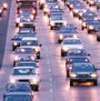
NHTSA Denies Petition Seeking Doubly Powerful High Beams
But in rejecting the 2004 request, the agency said it is now making a comprehensive review of the lighting standard and studying the feasibility of many regulatory changes.
The National Highway Traffic Safety Administration has denied a petition seeking to change the federal motor vehicle safety standard for lighting by allowing manufacturers to install headlights with high beams twice as powerful. The 2004 request by the Society of Automotive Engineers Lighting Committee and Groupe de Travail "Bruxelles 1952" (Working Party "Brussels 1952") asked for the current maximum intensity of 75,000 candela at one test point to be raised to 140,000 candela anywhere in the pattern, while several downward test points with minimum specified intensities would be eliminated. In rejecting the request, NHTSA said the petitioners had not proven the safety benefits of the proposed changes, but In its notice of the rejection published Aug. 24, NHTSA also said it is now studying the feasibility of many regulatory changes in the standard, which is based on sealed-beam headlight technology that has since evolved significantly.
While SAE and GTB said seeing distance will be improved by 5-10 percent by the increase in maximum intensity, NHTSA said the proposed headlights might cause "unacceptable levels of glare to other motorists." SAE and GTB had said the optional upper and lower beam patterns were based on specifications pending approval by the United Nations' Economic Commission for Europe under ECE R112 and, if adopted, U.S. vehicle manufacturers could certify products to either the existing regulation or the alternative.
"We believe the cited potential benefits likely would not provide measurable safety benefits in the United States," and the sign lighting performance by low beams as proposed might be reduced, the notice says. "The agency does believe there may be value in adopting the new photometry zone requirements as contained in the requested lower beam pattern. Our current lower beam photometry requirements are mostly unchanged since their adoption several decades ago and are therefore based on a technology (sealed beam headlamps) that has since greatly evolved. Given changes in technology, the agency believes there may be value in revisiting this issue. For example, the original photometry requirements were such that by specifying certain points, the performance between those points was predictable due to the headlamp designs prevalent then. However, this may not be true today as a variety of headlamp optics can be designed to produce significantly different beam patterns. Adopting zones to better characterize the intended performance of today's headlamps is an issue of interest to the agency as it may be helpful in reducing glare, often from unregulated test zones, which may not have been as prevalent when FMVSS No. 108 [the lighting standard] was first adopted."
In addition, NHTSA said, the changes of ECE R112 cited by the petitioners as anticipated for fall 2004 still have not occurred.
GTB is a global group of vehicle manufacturers, system suppliers, light source manufacturers, testing laboratories, and academia working to ensure regulation and safety of automotive lighting systems and their installation. Its members includes 18 delegations from Europe, the United States, Japan, and South Africa.